Helios HR 90 KEZ Handleiding
Bekijk gratis de handleiding van Helios HR 90 KEZ (6 pagina’s), behorend tot de categorie Afzuigkap. Deze gids werd als nuttig beoordeeld door 102 mensen en kreeg gemiddeld 4.5 sterren uit 51.5 reviews. Heb je een vraag over Helios HR 90 KEZ of wil je andere gebruikers van dit product iets vragen? Stel een vraag
Pagina 1/6

Minilüfter HR 90 K
Minifans HR 90 K
Mini-ventilateurs HR 90 K
1
MONTAGE- UND BETRIEBSVORSCHRIFT
NR. 90 672
Zur Sicherstellung einer einwandfreien Funktion
und zur eigenen Sicherheit sind alle nachstehen-
den Vorschriften genau durchzulesen und zu
beachten.
EMPFANG
Die Sendung sofort bei Anlieferung auf Beschädigun-
gen und Typenrichtigkeit prüfen. Falls Schäden vor-
liegen, umgehend Schadensmeldung unter Hinzu-
ziehung des Transportunternehmens veranlassen.
Bei nicht fristgerechter Reklamation gehen evtl. An-
sprüche verloren.
EINLAGERUNG
Bei Einlagerung über längeren Zeitraum sind zur Ver-
hinderung schädlicher Einwirkungen folgende Maß-
nahmen zu treffen: Schutz des Motors durch trockene,
luft- und staubdichte Verpackung (Kunststoffbeutel
mit Trockenmittel und Feuchtigkeitsindikatoren). Der
Lagerort muss erschütterungsfrei, wassergeschützt
und frei von Temperaturschwankungen sein.
Bei mehrjähriger Lagerung bzw. Motorstillstand muss
vor Inbetriebnahme eine Inspektion der Lager und
ggf. ein Lageraustausch durchgeführt werden. Bei
Weiterversand (vor allem über längere Distanzen) ist
zu prüfen, ob die Verpackung für Transportart und -
weg geeignet ist.
Schäden, deren Ursache in unsachgemäßem Trans-
port, Einlagerung oder Inbetriebnahme liegen, sind
nachweisbar und unterliegen nicht der Gewährlei-
stung.
EINSATZBEREICH
Die Ventilatoren sind zur Förderung normaler oder
leicht staubhaltiger, wenig aggressiver und feuchter
Luft, bei Temperaturen von -20 °C bis +40 °C und im
Bereich ihrer Leistungskennlinie geeignet. Bei den
..E..-Typen wird bei Temperaturen unter 0 °C der
Volumenstrom durch geringere Klappenöffnung re-
duziert.
Bei Betrieb unter erschwerten Bedingungen, wie z.B.
hohe Feuchtigkeit, längere Stillstandzeiten, starke
Verschmutzung, übermäßige Beanspruchung durch
klimatische, technische, elektronische Einflüsse, ist
Rückfrage und Einsatzfreigabe erforderlich, da die
Serienausführung hierfür u.U. nicht geeignet ist.
Ein bestimmungsfremder Einsatz ist nicht statthaft.
Das Gerät darf nicht im Freien und in Kontakt mit
Wasser betrieben werden.
ELEKTRISCHER ANSCHLUSS
Achtung: Alle Arbeiten sind im spannungsfreien
Zustand durchzuführen.
Der elektrische Anschluss darf nur von einer autori-
sierten Elektrofachkraft durchgeführt werden.
Zwingend vorgeschrieben sind ein allpoliger Netztrenn-
schalter mit mindestens 3 mm Kontaktöffnung.
Die ein-
schlägigen Sicherheitsvorschriften, Normen (wie VDE
0100, VDE 0530 und VDE 0700 sowie die TAB's der
EVU's und UVV) sind einzuhalten. Netzspannung und
Frequenz müssen mit den Angaben des Motorlei-
stungsschildes übereinstimmen.
Die Einführung der Zuleitung so vornehmen, dass bei
Wasserbeaufschlagung kein Eindringen entlang der
Leitung ermöglicht wird. Leitung nie über scharfe
Kanten führen.
INSTALLATION AND OPERATING INSTRUCTIONS
NO. 90 672
For safety it is absolutely necessary that the
following instructions are thoroughly read and
observed.
RECEIPT
Please check delivery immediately on receipt for
accuracy and damage. If damaged, please notify
carrier immediately. In case of delayed notification,
any possible claim may be void.
STORAGE
The following steps are to be taken when storing:
Protect electrical motors and switches by dry, air-
and dustproof packing (plastic bags with drying agent
and moisture indicators). The storage area must be
waterproof, vibration-free and free of temperature
variations.
When storing for several years or non rotation of
motor an inspection of the bearings with possible
relubrication and an installation inspection are abso-
lutely necessary before starting operation.
When transshipping check if the packing is adequate
for method and manner of transportation.
Damages due to improper transportation, storage or
putting into operation are not liable for warranty.
OPERATION/USE
The fans are suitable for moving normal or slightly
dusty, almost non-agressive and slightly humid air at
temperatures of -20 °C to +40 °C and in the range of
their performance characteristic curve. The air flow
volume of the E-types is reduced by reduced flaps
opening at temperatures below 0 °C.
For operation under difficult conditions i.e. high humi-
dity, longer period of standstill, high pollution,
excessive working conditions through climatic,
technical or electronic influences, further inquiry and
operation release is necessary as the standard
execution might not be suitable.
The fan may only be used according to its intended
purpose. The fan may not be used outdoors and may
not come in contact with water during operation.
ELECTRICAL CONNECTION
Attention: All work must be carried out with the
equipment fully isolated from the power supply.
The electrical connections are to be carried out in
accordance with the relevant wiring diagram and are
only to be done by a qualified electrician.
Peremptory
regulations are an all-pole mains switch with a minimum
contact opening of 3 mm.
All relevant safety regulati-
ons, national standards and norms are to be adhered
to. The Installation and Operation Instructions for the
fans are also to be observed.
Lead the cable into the housing in such a way that
not water can run along the cable into the inside of the
fan. The cable must never be laid over sharp edges.
NOTICE D’INSTALLATION ET D’UTILISATION
NO. 90 672
Par mesure de sécurité, l’ensemble des prescrip-
tions qui suivent sont à lire attentivement et à res-
pecter!
RÉCEPTION
Dès réception vérifier l´état et la conformité du matériel
commandé. En cas d´avaries, faire les réclamations
d’usage auprès du transporteur.
Attention: Pas de remarques à temps, pas de re-
cours.
STOCKAGE
En cas de stockage prolongé, il appartient de prendre
les mesures suivantes pour éviter tout dommage:
envelopper les moteurs dans un emballage sec, étan-
che à l’air et aux poussières (à l’aide par ex. d’un sac
plastique dans lequel sera placé un agent déshy-
dratant avec indicateur d’humidité). Le matériel est à
stocker dans un endroit abrité de l’eau, exempt de
variations de température et de vibrations.
Lors d’un stockage ou d’un non-fonctionnement du
moteur pendant plusieurs années, il faut procéder
avant la remise en fonctionnement à un contrôle des
roulements (en les remplaçant éventuellement). En
cas de réexpédition du matériel (surtout pour de lon-
gues distances), vérifier que le type d’emballage soit
approprié au mode de transport choisi.
Les dommages dus à de mauvaises conditions de
transport, à des stockages défectueux ou à une utili-
sation anormale sont sujets à vérification et contrôle
et entraînent la suppression de notre garantie.
DOMAINE D’UTILISATION
Ces ventilateurs sont destinés à l’extraction ou l’intro-
duction d’air dans des conditions de température
comprises entre -20 °C et +40 °C, d’humidité et de
pression atmosphérique, avec une basse teneur en
poussières à faible agressivité et dans la limite de
leurs courbes de performance. Lorsque les tempéra-
tures sont inférieures à 0 °C, le débit d’air peut être
réduit sur les appareils de types..E.., en diminuant
l’ouverture du volet.
Pour des conditions d’utilisation difficiles telles que
forte humidité, longue période de non-fonctionne-
ment, fort encrassement, conditions d’utilisation ri-
goureuses dues au climat, au type d’application ou
au flux de régulation électronique, il est indispensable
d’obtenir l’accord du fabricant, car vraisemblable-
ment les matériels standards ne seront plus appro-
priés.
Il n’est pas permis d’utiliser ces appareils pour d’aut-
res fonctions en dehors de leur utilisation normale.
L’appareil ne doit pas être utilisé à l’air libre et ne doit
jamais être en contact avec de l’eau.
BRANCHEMENT ÉLECTRIQUE
Attention: Tous les travaux doivent être effectués
hors tension.
Le branchement électrique est à réaliser selon le
schéma de connexion correspondant.
Les prescripti-
ons suivantes sont absolument de rigueur disjoncteur
omnipolaire avec ouverture de contact d'au moins 3
mm.
Il doit être effectué par un électricien qualifié. Les
consignes de sécurité ainsi que les normes stan-
dards nationales doivent être respectées. Il est aussi
impératif de respecter les indications des instructions
d´installation.
Le passage du câble d’alimentation doit être effectué
de telle sorte qu’un éventuel filet d’eau ne puisse pas
s’infiltrer le long du câble au-dessus d’objets cou-
pants.

Minilüfter HR 90 K
Minifans HR 90 K
Mini-ventilateurs HR 90 K
2
EINSATZ BEI RAUMLÜFTUNG
Zur Erreichung der erwarteten Ventilatorleistung ist
eine planmäßige Zuluftführung Voraussetzung. Bei
Betrieb von schornsteinabhängigen Feuerstellen im
entlüfteten Raum müssen diesen bei allen Betriebs-
bedingungen ausreichend Zuluft zugeführt werden.
LEISTUNGSDATEN
Das Motortypenschild gibt über die elektrischen
Werte Aufschluß; diese sind auf Übereinstimmung
mit den örtlichen Gegebenheiten zu überprüfen. Die
Ventilatorleistungen wurden auf einem Prüfstand ent-
spr. DIN 24 163, T. 2 ermittelt; sie gelten für die Nenn-
drehzahl und Normalausführung bei ungehinderter
An- und Abströmung. Hiervon abweichende Ausfüh-
rungen und ungünstige Einbau- und Betriebsbedin-
gungen können zu einer Reduzierung der Förder-
leistung führen.
Achtung: Die volle Ventilatorleistung wird nur er-
reicht, wenn freie An- und Abströmung gegeben ist.
Für ausreichende Motorkühlung muss sichergestellt
sein, dass eine Mindest-Luftströmungsfläche von
20% des Ventilatorquerschnittes gegeben ist.
BERÜHRUNGSSCHUTZ
Bei Einbau sind die gültigen Arbeitsschutz- und Unfall-
verhütungsvorschriften zu beachten. Kontakt mit ro-
tierenden Teilen muss verhindert werden. Es ist si-
cherzustellen, dass sich im Ansaugbereich keine
Textilien (z.B. Vorhänge) oder andere ansaugbare
Stoffe, wie z.B. auch Kleidung von Personen, befin-
den.
GERÄUSCHPEGEL
Die im Katalog genannten Geräuschwerte können im
Einbaufall erheblich abweichen, da der Schalldruck-
pegel vom Absorptionsvermögen des Raumes, der
Einbausituation u. a. Faktoren abhängig ist.
MONTAGE
Mit geeignetem Werkzeug in den Öffnungen links und
rechts der Fassade Schnapphaken durch leichtes
Eindrücken lösen. Das Lüftergehäuse in ein Rohr NW
100 einsetzen oder mit drei Holzschrauben und
Dübel befestigen (wichtig bei Deckenmontage).
Mauerdurchbruch min. Ø = 105 mm, max. 125 mm.
Der dem Lüfter beigelegte Schaumstoff-Streifen dient
zur Überbrückung von Durchmesserdifferenzen und
kann bei Bedarf außen auf das Lüfterrohr geklebt
werden. Bei vertikaler Einbaulage (Stutzen nach
oben) ist der Montageflansch MF 90 (Zubehör) zu
verwenden.
Achtung: Beim Einbau ist darauf zu achten, dass
das Lüftergehäuse weder verspannt noch ge-
quetscht wird, um ein Streifen des Laufrades zu ver-
meiden. Nachdem der elektrische Anschluss vorge-
nommen wurde (siehe auch elektr. Anschluss), kann
die Gitterblende wieder aufgesetzt werden.
Die Gitterblende darf nur entfernt werden, wenn
der Lüfter elektrisch spannungsfrei geschaltet ist.
OPERATION AS ROOM VENTILATION DEVICE
In order to achieve the desired fan performance
a systematic air supply is imperative. When using
chimney dependant fire-places in ventilated rooms
these must have enough supply air no matter which
operation conditions.
PERFORMANCE DATA
The motor rating plate provides information on the
electrical data; this data is to be examined for its
conformity to the local conditions.
The fan performances were determined on a test
stand according to DIN 24 163, Part 2; they are valid
for the rated speed and standard execution at free
suction and discharge. Diverging execution and
adverse installation- and operation conditions can
lead to a reduction of performance.
Attention: The max. fan performance can only be
achieved if unhindered suction and discharge is pro-
vided. For a sufficient cooling of the motor a minimum
air-flow area of 20% of the fan cross section must be
guaranteed.
PROTECTION AGAINST ACCIDENTAL CONTACT
When installing ovserve the valid regulations for
labour protection and accident prevention. Any
contact with rotating parts must be avoided.
Make sure that no textiles (such as curtains) or other
materials which could be sucked in, as for instance
clothing are close to the suction area of the fan.
SOUND LEVEL
The sound levels stated in the catalogue can differ
considerably after installation as the sound pressure
level depends on the absorption capacity of the
room, the place of installation and other factors.
INSTALLATION
Remove the cover by using the correct tool and
applying light pressure on the spring catches in the
openings left and right of the cover.
Insert the fan housing in a pipe of dia. 100 mm or fix
on the wall with 3 screws and plugs (necessary for
mounting on the ceiling). Necessary mounting
aperture Ø 105 mm min., 125 mm max. The foam
rubber enclosed with the fan bridges the gap
between diameters and facilitates the sealing. It may
be adjusted on the outside of the fan motor casing, if
necessary. If installed vertically (spigot facing up-
wards) the MF 90 (accessory) must be used.
Important: When installing, please ensure that the
housing is neither pitted nor forced into the pipe so as
to avoid the impeller tipping the sides of the casing.
When the electrical connection has been made (see
electrical connenctions) the frame of housing and the
grille can be mounted again. The fan is ready for use.
The facade must not be removed until the electrical
connection current has been disconnected.
UTILISATION POUR L’AÉRATION DE LOCAUX
Le débit indiqué pour chaque ventilateur ne peut être
efficacement obtenu que si l’installation présente une
entrée d’air effective. En cas d’utilisation d’un ventila-
teur dans une pièce équipée d’un chauffage à foyer
ouvert, il est nécessaire que les entrées d’air soient
correctement dimensionées pour permettre l’appro-
visionnement suffisant en air de renouvellement.
PERFORMANCES TECHNIQUES
Sur les plaques signalétiques des moteurs sont por-
tées les caractéristiques électriques. Il est nécessaire
de vérifier la conformité avec les valeurs locales. Les
performances des ventilateurs ont été déterminées
sur un banc d’essai conformément à la norme DIN
24163, 2ème partie. Elles sont valables pour la vites-
se nominale, dans l’exécution standard. Lors du test,
aspiration et refoulement sont dégagés de toutes
entraves pour assurer une libre circulation de l’air.
Des exécutions autres que l’exécution standard, des
conditions d’installation et d’utilisation défavorables
peuvent conduire à une réduction des performances.
Attention: Le débit maxi. d’un ventilateur n’est effectif
que si l’entrée ou la sortie d’air a été normalement
dimensionnée dans l’installation. Pour un refroidisse-
ment suffisant du moteur, il est nécessaire d’assurer
des surfaces de passage d’air au moins égales à
20% de la section du ventilateur.
PROTECTION CONTRE TOUT CONTACT
ACCIDENTEL
Lors de l’installation, il faut respecter strictement les
prescriptions concernant la protection du travail et la
prévention des accidents. Tout contact avec les piè-
ces en rotation doit être évité. Il faut veiller à ce que
des textiles (par ex. rideaux) ou autres tissus pouvant
être aspirés, voire par ex. vêtements, ne se trouvent
pas dans le champ d’aspiration de l’appareil.
NIVEAU SONORE
Lors d’une installation, le niveau sonore peut varier
substantiellement par rapport aux spectres sonores
indiqués dans le catalogue étant donné qu’il dépend,
entre autres, du pouvoir d’absorption du local et de
la situation de l’installation.
MONTAGE
A l’aide d’outillage approprié, retirer la façade en
pressant le crochet d’enclenchement dans les trous
d’ouverture côtés droit et gauche.
Insérer le boîtier du ventilateur dans un tube de
diamètre inférieur à 100 mm ou le fixer à l’aide de 3
vis et chevilles au mur (nécessaire au montage au
plafond). Ø mini. du trou de montage 105 mm, maxi.
125 mm. La bande de mousse joint au ventilateur
sert à égaliser la différence éventuelle de diamètre
entre le trou du mur et le tour du ventilateur. Pour un
montage en position verticale (gaine vers le haut) uti-
liser le support de montage MF 90 (accessoire).
Attention: Pour éviter le frottement de l’hélice, il est
recommandé que le boîtier soit bien appliqué sur une
surface plane et que le tube rentre librement dans le
mur. Après le branchement électrique (voir aussi
branchement électrique) le cadre du boîtier et la façade
peuvent être remis en place. Le ventilateur est prêt à
fonctionner.
Le ventilateur doit être mis hors tension pour
retirer la façade.

Minilüfter HR 90 K
Minifans HR 90 K
Mini-ventilateurs HR 90 K
3
FUNKTION DES NACHLAUFSCHALTERS
Bei Minilüfter mit eingebautem Zeitschalter hat der
Ventilator eine Einschaltverzögerung, die abhängig von
der Raumtemperatur ist. Die Nachlaufzeit ist ebenfalls
von der Raumtemperatur abhängig, jedoch ist die Ein-
schaltdauer in erster Linie maßgebend für die Nach-
laufzeit. Um eine einwandfreie Funktion zu erreichen, ist
darauf zu achten, dass der Ventilator nicht in unmittelba-
rer Nähe von Heizungsrohren angebracht ist.
INBETRIEBNAHME
Folgende Kontrollarbeiten sind auszuführen:
– Bestimmungsgemäßen Einsatz des Ventilators
überprüfen
– Netzspannung mit Leistungsschild vergleichen
– Ventilator auf solide Befestigung prüfen
– Alle Teile, insbesondere Schrauben, Muttern,
Gitterblende auf festen Sitz überprüfen
– Freilauf des Laufrades prüfen
– Stromaufnahme mit Leistungsschildangaben ver-
gleichen
– Abdichtung des Anschlusskabels und festen
Klemmsitz der Adern prüfen
– Inbetriebnahme darf nur erfolgen, wenn der Be-
rührungsschutz des Laufrades sichergestellt ist.
HINWEISE – STÖRUNGSURSACHEN
– Auslösung des thermischen Überlastungsschutzes
deutet auf Verschmutzung, Schwergängigkeit des
Laufrades und/oder der Lager hin. Eine zu hohe
Wicklungstemperatur durch zu geringe Motorküh-
lung oder zu hohe Fördermitteltemperatur kann
ebenfalls Ursache sein.
– Anormale Geräusche können die Folge von aus-
gelaufenen Lagern sein.
– Vibrationen und Schwingungen können ihre Ur-
sache in einem unwuchtigen u. U. mit Schmutz
beaufschlagten Laufrad oder in der Einbausituation
haben.
– Stark geminderte Leistung kann auftreten, wenn
der Ventilator über dem Umschlagspunkt arbeitet.
(Verbunden mit höherem Geräusch). Dies beruht
u. U. auf mangelnder Zuluftnachströmung bzw. zu
hohem Anlagewiderstand.
WARTUNG
Achtung: Alle Arbeiten nur in spannungslosem
Zustand vornehmen.
Übermäßige Ablagerungen von Schmutz, Staub,
Fetten u.a.m. auf Laufrad, Motor, Gitterblende und v.
a. zwischen Gehäuse und Laufrad sind unzulässig
und durch periodische Reinigung zu unterbinden.
Sofern das Gerät eine versorgungstechnisch wichti-
ge Funktion übernimmt, ist eine Wartung in halbjähri-
gen Abstand, im Falle längeren Stillstands bei
Wiederinbetriebnahme, durchzuführen.
FUNCTION OF OVER-RUN TIMER
Minifans with built-in over-run timers have a delay of
starting depending on the room temperature. The
over-run time is also dependent on the room
temperature, however the switch-on period is more
important. In order to obtain perfect function, please
ensure that the fan is not mounted near to hot pipes.
PUTTING INTO OPERATION
The following chechs are to be carried out:
– check for operation according to the intended
purpose of the fan
– compare power supply voltage with data on the
rating plate
– check if fan is tightly mounted
– check all parts especially screws, nuts and grille
for tight fit
– test unhindered running of the impeller
– compare current consumption with data on the
rating plate
– check sealing of the connection cable and tight
clamp of the cable wires
– start operation only if a protection against accidental
contact with impeller is guaranteed.
INDICATIONS – DISTURBANCE ORIGINS
– If the thermal protecton trips this could be the
result of dirt build-up, a hard running impeller and/
or bearings. Too high winding temperature through
insufficient motor cooling, or too high air flow
temperature could be the cause of disturbance.
– Abnormal noises can mean worn out bearings.
– Vibrations can originate from an unbalanced or
dirty impeller or due to the installation.
– Extreme performance reduction can occur if the fan
operating range is higher than the final point of
operation (causing also higher sound level).
Reasons for this can be the lack of sufficient
streaming in of air or too high resistance of the
ventilation system.
MAINTENANCE
Attention: All servicing only in dead state.
Excessive deposit of dirt, dust, grease and other
materials on the impeller, motor and protection grille
especially between housing and impeller is to be
avoided and has to be prevented by periodical
cleansing.
If the fan is used for important functions servicing is
necessary at least every 6 months, in case of standstill
for a longer period of time it must be serviced before
starting operation.
FONCTION DU TEMPORISATEUR
Le Mini-ventilateur avec temporisateur incorporé
possède un retard de démarrage, dépendant de la
température ambiante. La temporisation est égale-
ment dépendant de la température ambiante, mais
surtout de la durée d’occupation du local. Pour attein-
dre un service optimum il est conseillé de ne pas placer
le ventilateur près d’une source de chaleur (comme
par exemple tuyeaux de chauffage central).
MISE EN MARCHE
Les opérations de contrôle suivantes sont à effectuer:
– contrôler si l’installation du ventilateur est conforme
aux prescriptions
– vérifier si la tension d’alimentation correspond à
celle indiquée sur la plaque signalétique
– contrôler la fixation du ventilateur
– vérifier le serrage de toutes les pièces, en particulier
celui des vis, écrous, grilles de protection
– contrôler la libre rotation de l’hélice
– comparer l’ampérage absorbé avec l’indication de
la plaque signalétique
– contrôler l’isolation du câble de raccordement et le
serrage de toutes les cosses
– n’effectuer la mise en route qu’à condition que
l’hélice soit protégée de tout contact.
INDICATIONS – CAUSES DE DERANGEMENT
– Un déclenchement de la protection thermique in-
dique un encrassement et/ou une surcharge soit
au niveau de l’hélice, soit au niveau des roule-
ments. Une élévation de température anormale du
bobinage due à un refroidissement insuffisant du
moteur, ou à une température du fluide véhiculé
trop élevée peut être la cause d’une panne.
– Des bruits anormaux peuvent être causés par des
roulements perdant leur graisse.
– Des vibrations et oscillations peuvent être causées
par une hélice mal équilibrée ou présentant un en-
crassement anormal ou encore par une installation
du ventilateur non conforme.
– Un débit insuffisant peut survenir lorsque le venti-
lateur fonctionne au-delà du point critique (zone
de pompage). Ceci engendre simultanément une
augmentation de l’intensité sonore. Ceci est géné-
ralement dû à un flux d’air de renouvellement in-
suffisant ou à une résistance trop importante du
circuit de l’installation.
ENTRETIEN
Attention: Toutes les opérations sont à effectuer
hors tension.
D’importants dépôts de poussières, graisses, matéri-
aux divers peuvent se trouver sur l’hélice, le moteur,
les grilles de protection et tout particulièrement entre
le caisson et l’hélice. Ces dépôts ne peuvent être ac-
ceptés. Pour un bon fonctionnement, un nettoyage
régulier est nécessaire.
Si l’appareil a une fonction très importante, un entre-
tien doit être effectuer au moins tous les six mois, en
cas de périodes de non-fonctionnement prolongées
lors de la remise en marche.
Product specificaties
| Merk: | Helios |
| Categorie: | Afzuigkap |
| Model: | HR 90 KEZ |
| Kleur van het product: | Wit |
| Gewicht: | 600 g |
| Breedte: | 140 mm |
| Diepte: | 58 mm |
| Hoogte: | 140 mm |
| Makkelijk schoon te maken: | Ja |
| Internationale veiligheidscode (IP): | IP45 |
| Diameter: | 97 mm |
| Vermogensverbruik (max): | 20 W |
| Materiaal: | Kunststof |
| Luchtstroom: | 95 m³/uur |
| Aantal: | 1 |
| Veiligheidsfunties: | Waterbestendig |
| Aantal ventilatoren: | 1 ventilator(en) |
| Montage: | Muur |
| Gemakkelijk te installeren: | Ja |
| Geschikte locatie: | Universeel |
| AC-ingangsspanning: | 230 V |
| AC-ingangsfrequentie: | 50 Hz |
| Bedrijfstemperatuur (T-T): | 0 - 50 °C |
| Ventilator diameter: | - mm |
| Veiligheidsnet: | Ja |
| Fan snelheid (max): | 2550 RPM |
| Zekering: | 0.14 A |
Heb je hulp nodig?
Als je hulp nodig hebt met Helios HR 90 KEZ stel dan hieronder een vraag en andere gebruikers zullen je antwoorden
Handleiding Afzuigkap Helios

14 Juni 2023

8 Juni 2023

4 Juni 2023

3 Juni 2023

2 Juni 2023

30 Mei 2023
Handleiding Afzuigkap
Nieuwste handleidingen voor Afzuigkap
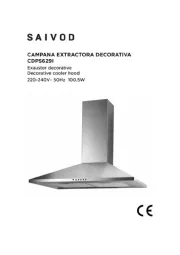
15 September 2025
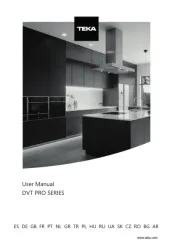
15 September 2025
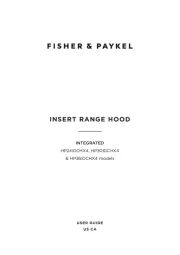
15 September 2025
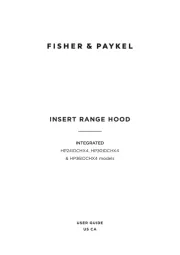
15 September 2025
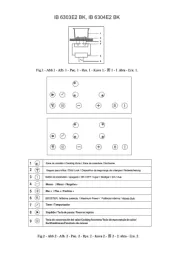
15 September 2025
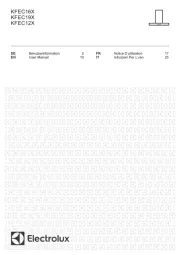
15 September 2025
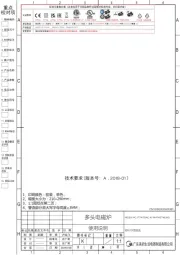
15 September 2025
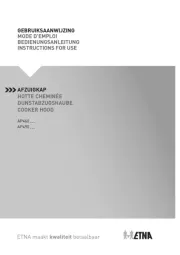
13 September 2025
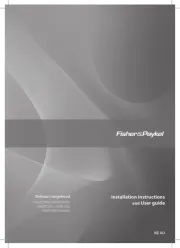
9 September 2025
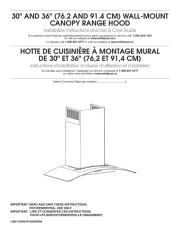
9 September 2025